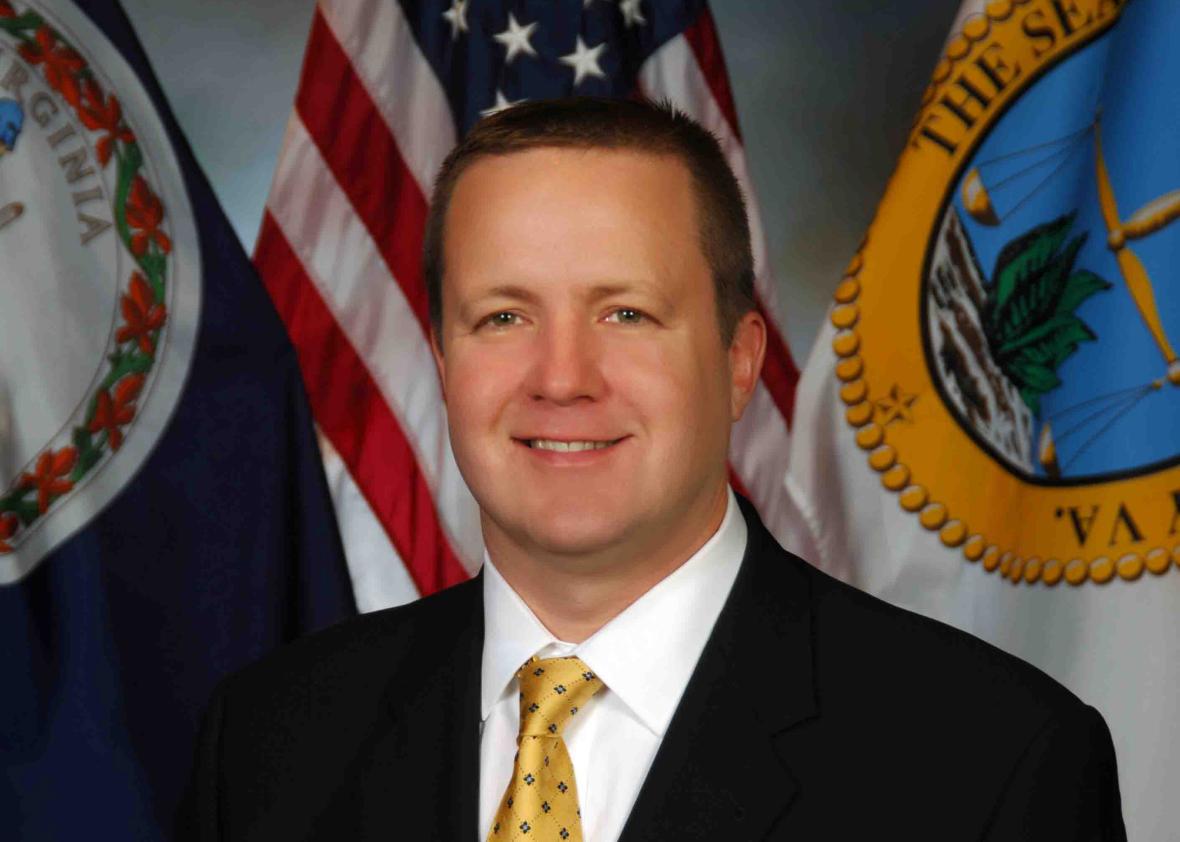On Tuesday, Virginia Democrats nominated for governor Ralph Northam, the sitting lieutenant governor, over Tom Perriello, a former congressman and self-described “pragmatic populist.” Both ran vigorous progressive campaigns, but Northam—with his strong ties to the state party and deep relationships with Democratic lawmakers—prevailed, winning by 11 percentage points. But more important than the margin was the overall vote total. Together, Perriello and Northam brought more than 540,000 voters to the polls, dwarfing the Republican total and signaling a major enthusiasm advantage among Democrats.
With that in mind, Virginia Republicans also chose a candidate for governor: former Republican National Committee chair Ed Gillespie, who nearly toppled Mark Warner in the state’s 2014 Senate race. But Gillespie—the favorite in the race, expected to score an easy victory—barely crossed the finish line ahead of his opponent, squeaking by with just over 4,000 votes to spare. Gillespie’s weakness doesn’t bode well for November, when he faces an energized Democratic Party eager to strike a blow against President Trump.
The candidate who nearly toppled Gillespie, in a near-upset that would have upended the gubernatorial race, is Corey Stewart, the Minnesota-born conservative whose slogan—“Take Back Virginia”—captured the core of his campaign. He was running as a voice for Trumpism, railing against “illegal immigration,” condemning “transgender bathrooms,” slamming Gillespie as a “cuckservative,” and centering his campaign on an aggressive defense of the state’s Confederate monuments and memorials. Holding rallies at sites like the Robert E. Lee statue in Charlottesville, Stewart marched with neo-Confederates and leaned on Confederate iconography. He was running a campaign for an older, whiter Virginia, one that seeks to wrest the state away from its growing majority of immigrants, black Americans, and liberal college-educated whites. And he doesn’t intend to reconcile himself to Gillespie’s win. “This fight will continue, and I’ll continue to fight as long as you’ll fight with me,” said Stewart in the wake of his defeat. “There’s one word you’ll never hear from me, and that’s ‘unity.’ ”
No one thought Stewart had a chance. He lacked resources, trailed Gillespie by double-digits in public polling, and was out of step with a Virginia Republican establishment struggling to adapt in a state that had moved from solid red to reliably blue in just a decade.
But there were signs. Stewart may alienate the more affluent and professional voters who back establishment-friendly candidates like Gillespie—and who delivered enough votes in Northern Virginia and Hampton Roads to give him a victory—but he’s simpatico with the great majority of Virginia Republicans who approve of Trump. Stewart also fits a recent pattern in the state. In the early years of Virginia’s turning blue, just after Barack Obama’s victory in 2008, Republicans could still unify behind candidates like Bob McDonnell, a deeply conservative but still mainstream politician. After 2012, however, there was a shift. The extremism always present within the state party took hold, and never relinquished its grip.
In 2013, Republicans nominated a conservative radical, Attorney General Ken Cuccinelli, for governor and a far-right provocateur, E.W. Jackson, for lieutenant governor. Ignoring the broad middle that shapes statewide politics in Virginia, both Cuccinelli and Jackson ran hard-right ideological campaigns. “Clearly, this is not just the most conservative, but the most ideologically-driven ticket that the Republican Party has ever put forth,” said then–Lt. Gov. Bill Bolling in an interview with Politico before that election. Bolling, a Republican, had dropped out of the race for governor after the state GOP changed its nominating rules to assure a Cuccinelli victory. “There are a lot of Republicans, like me, very concerned about the direction of the party. We believe for the Republican Party to be a viable party in Virginia, we’ve got be a more mainstream party and communicate a more mainstream message.”
The extremist Cuccinelli ticket lost to Terry McAuliffe, who benefited from a scandal-plagued Republican incumbent and his own moderate, broad-based campaign. But in the wake of this defeat, which handed every statewide office to Democrats, Republicans moved further to the right. Recalcitrant conservatives in the General Assembly refused to work with now Gov. McAuliffe on key priorities, and—in a sign of things to come nationally—Rep. Eric Cantor lost his seat in a surprising primary defeat to Dave Brat, a little-known conservative activist who blasted Cantor, a reliably right-wing lawmaker, as a sellout.
Factor in the larger political landscape—from the explicit embrace of white racial resentment to the rise of performative outrage (also known as trolling) as a mode of conservative politics—and Corey Stewart’s surprise showing is much easier to understand. A vessel for xenophobia, political extremism, and white reaction, Stewart sits at the intersection of trends in both the Virginia GOP and the country writ large. His near-win, capturing 42.5 percent of the primary vote to Gillespie’s 43.7 percent, shows the extent to which Trumpism still appeals to large parts of the Republican electorate, even when Donald Trump isn’t on the ballot.
What has happened to the Virginia Republican Party is the same as what happened to its national counterpart. Increasingly, its voters have abandoned politics—and the compromise, deliberation, and shared decision-making it requires—in favor of a kind of primal scream, an outburst of rage and anger against the groups they hate and fear. That scream wasn’t strong enough to give Stewart the nomination—barely. But it did put Trump into the White House, which means it hasn’t lost its power.
